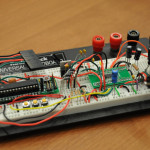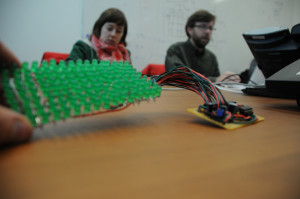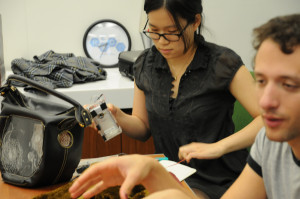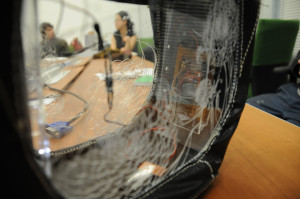
What if we all had a ham radio license? We could be anywhere in NYC and have an audio backchannel via repeater. If there was a disaster, we could coordinate. We could set up aprs data transfer over radio to connect at a rocking 1200 baud over radio waves! I’ve used handy talkies for basic communication and gps data transfer over aprs during the ahab project and having a ham radio license is super handy.
I think it would be awesome if some folks in the group got their license. Here’s how to do it.
1. Download the powerpoints from the microhams and study! The basic license is called the “technician” license. – Link to study materials
2. Take your test! It appears the easiest place to get your test will be in Brooklyn on March 4th, which gives you lots of time to study.
04-Mar-2008
Sponsor: KINGS COUNTY RA
Time: 7:00 PM (No walk-ins)
Contact: ROBERT V SAN GIULIANO
(718)852-2030
VEC: ARRL/VEC
Location: GUILD FOR EXCEPTIONAL CHILDREN
260 68TH ST
WWW.KC2RA.COM/VE.HTML
REGISTER BY SUNDAY BEFORE EXAM
BROOKLYN, NY 11220
If you’re feeling ambitious, go to this one!
17-Dec-2007
Sponsor: COLUMBIA UNIV VE TEAM ARC
Time: 6:30 PM (Walk-ins allowed)
Contact: ALAN CROSSWELL
(212)854-3754
Email: [email protected]
VEC: ARRL/VEC
Location: WWW.W2AEE.COLUMBIA.EDU/CUARC-EXAMS.HTML
2960 BROADWAY
COLUMBIA UNIVERSITY
115 HAVEMEYER HALL
NEW YORK, NY 10027
Painting above is by Thomas Hurley III. – Link
 Sorry for the late posting, but this show is tonight. Its a really rad exhibition of cool tech projects from the ITP students at NYU. Lots of fun artsy type Arduino projects and other stuff. I went there last year, and it was a good time and I had lots of cool conversations. This year should be good as well.
Sorry for the late posting, but this show is tonight. Its a really rad exhibition of cool tech projects from the ITP students at NYU. Lots of fun artsy type Arduino projects and other stuff. I went there last year, and it was a good time and I had lots of cool conversations. This year should be good as well.









